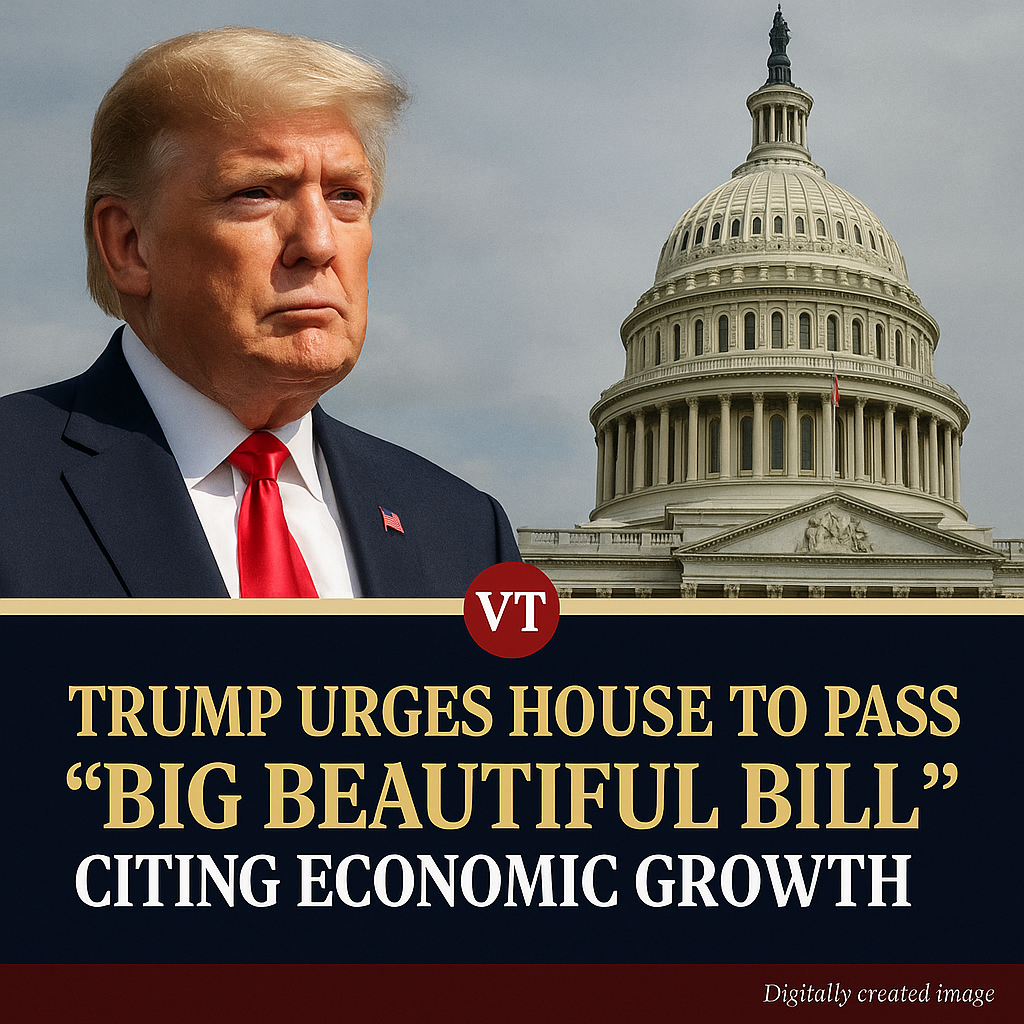- President Trump claims historic investment levels and tariff revenues in post backing legislation.
- The “Big Beautiful Bill” includes tax cuts, defense funding, and immigration enforcement.
- House Republicans are debating the bill following a Senate tie-breaking vote by VP JD Vance.
Trump Urges Action on Truth Social
On Wednesday morning, President Donald Trump posted a message on Truth Social urging House Republicans to pass his legislative centerpiece, dubbed the “Big Beautiful Bill.”
Fact Check: What the Data Shows
According to recent economic reports from the Bureau of Economic Analysis (BEA), the U.S. economy expanded at an annual rate of 2.9% in Q1 2025. While this reflects solid growth, it is not the highest on record.
Trump also cited “trillions of dollars” in new investment flowing into the U.S. economy. While there has been renewed foreign direct investment and private sector expansion—particularly in manufacturing and energy—independent verification of “record levels” across all sectors is not yet available.
On tariffs, data from the U.S. Department of the Treasury confirms that tariff revenues have increased in 2025 due to expanded duties on Chinese and Mexican imports under Trump’s renewed trade agenda. In May 2025 alone, the U.S. collected over $11 billion in customs duties, a notable jump compared to 2024 monthly averages.
Bill Still Under House Debate
The legislation, which passed the Senate on Tuesday with Vice President JD Vance casting the tie-breaking vote, is now under active debate in the House. Early Wednesday, the House Rules Committee advanced the bill with a 7–6 vote, allowing full floor consideration to begin.
The bill contains major Republican priorities, including corporate and personal tax cuts, increased defense funding, and significant funding boosts for immigration enforcement. However, it does not include a provision to eliminate taxes on Social Security benefits, contrary to repeated claims by Trump during his recent rallies.
(with economic data from BEA, U.S. Treasury, and legislative documents from Congress.gov)

